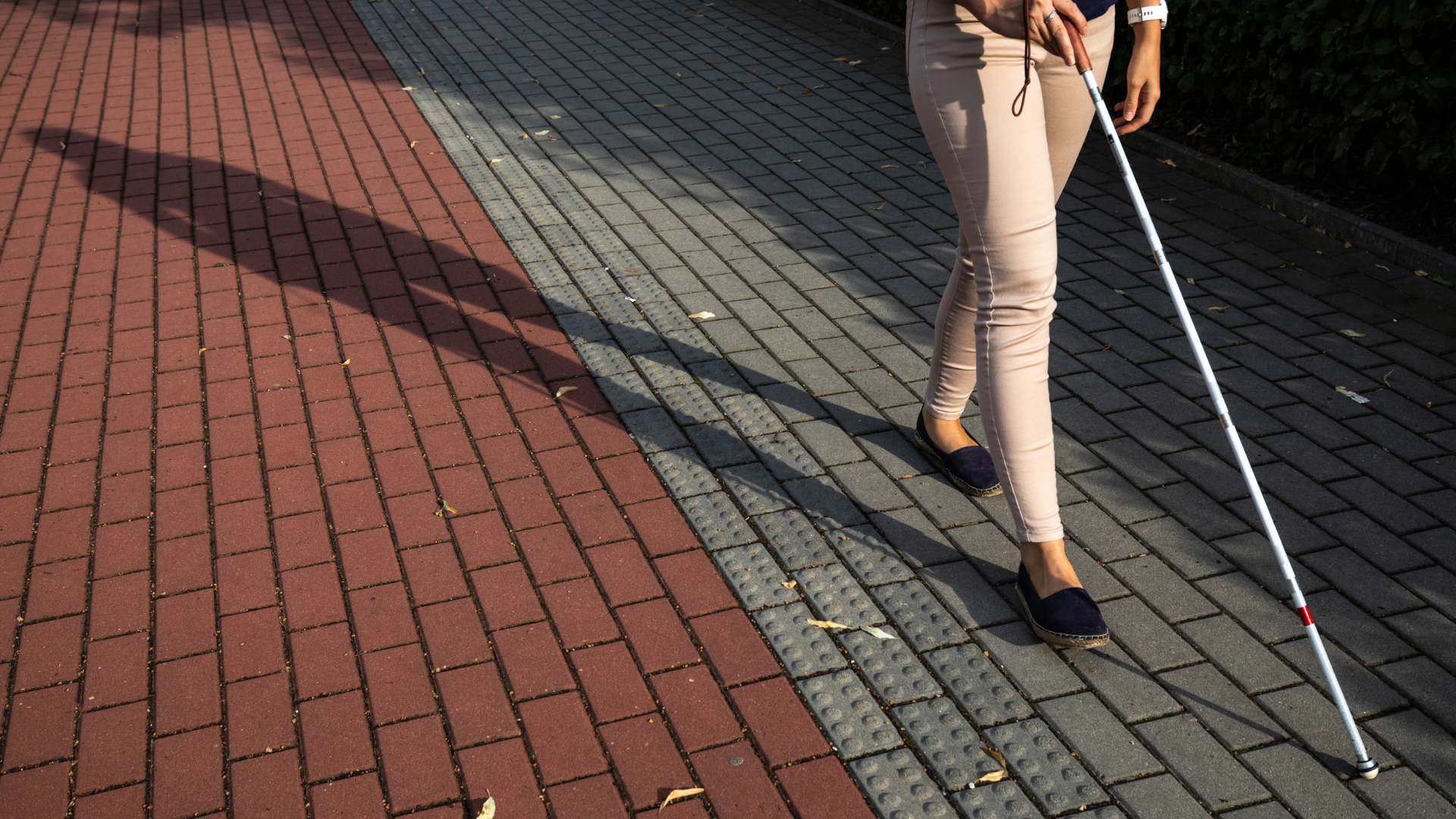Choosing the right tip for your white cane is critical to maintaining your mobility and independence. Many factors come into play, including whether you are using your cane for mobility, ID, or both; the types of terrain you expect to encounter, and the mobility cane techniques you use.
White canes provide feedback about the terrain, obstacles, and other potential hazards to the blind and visually impaired. One critical component of the white cane is the tip, which comes in various shapes, sizes and uses. In this article, we will discuss the pros and cons of different white cane tips, including pencil tips, rolling marshmallow tips, non-rolling marshmallow tips, roller ball tips, and high mileage tips.
Pencil Tips
Pencil tips are the most common type of white cane tip. They are typically made of hard rubber or plastic and have a small, round tip that provides excellent feedback when the cane is moved along the ground. The pencil tip is ideal for people who need to navigate smooth surfaces like tile or concrete, but it can struggle on uneven surfaces like gravel or grass.
Pros: Provides excellent feedback on smooth surfaces -Long-lasting -Affordable
Cons: Struggles on uneven surfaces -Noisy on hard surfaces
Rolling Marshmallow Tips

The rolling marshmallow tip is a unique type of white cane tip that features a nylon cylindrical 1" tip that rolls along the ground with the aid of an internal ball bearing. The roller marshmallow tip provides excellent feedback, allowing the user to detect slight changes in the terrain. It is also very quiet and can be useful for people who need to navigate indoors.
Pros: Provides excellent feedback especially when using the constant contact technique -Quiet -Good for indoor use
Cons: Not as durable as harder pencil tips
Non-Rolling Marshmallow Tips
Non-rolling marshmallpow tis are similar to rolling marshmallow tips, but they feature fixed 1" nylon tip that does not roll on a ball bearing. They provide similar feedback to rolling marshmallow tips but may not handle some terrain as smoothly.
Pros: Provides excellent feedback, especially when using the two point touch technique -Quiet
Cons: -May not be suitable for people who need to navigate over long distances or very uneven terrain.
Roller Ball Tips
Roller ball tips are feature a large ball that rolls along the ground with the aid of ball bearings. This design provides excellent feedback on both smooth and uneven surfaces and is quieter than pencil tips. Perfect for people who utilize the constant contact technique
Pros: Roller Ball tips provide excellent feedback over more uneven terrain than a roller marshmallow tip
Cons: May be more expensive than other tips -Less compact than pencil or marshmallow style tips
High Mileage Roller Ball Tips
High-mileage roller ball tips tips are designed for people who need to navigate over long distances and uneven terrain. They are typically made of durable materials like metal and are designed to withstand heavy use.
Pros: Durable -Provides excellent feedback on both smooth and uneven surfaces; perfect for those who use the constant contact technique.
Cons: More expensive and less compact than other options -May be noisy on hard surfaces
In conclusion, the choice of white cane tip will depend on the user's needs and preferences. From small pencil tips to large roller balls; fixed to smooth rolling, for mobility or ID, there is a cane tip to fit every need. And don't forget, tips are relatively easy to swap; so you can have a tip for every occasion!









